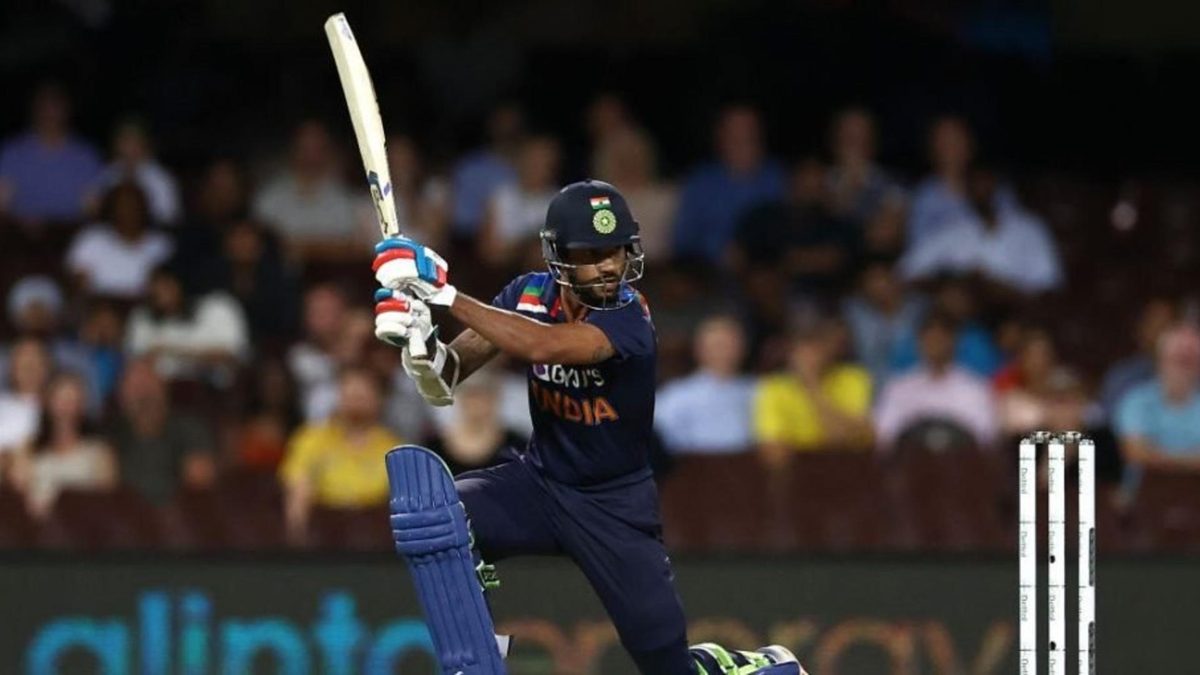
After not been picked for the T20I series against South Africa, there seems to be a big question mark over Shikhar Dhawan’s international career. And while his recent T20I numbers might not be that inspiring, India should still look to have their big-tournament specialist for the World Cup later this year, writes Aadya Sharma.
Not too long ago, Shikhar Dhawan was one-half of an inseparable pair of white-ball openers: with Rohit Sharma by his side, the two plundered attacks through the years, making it a joyride at the top for India. Rohit was arguably the more aggressive of the two, but Dhawan wasn’t too far behind; few players have made run-scoring look easier.
But the pair haven’t batted together in T20Is since 2019, and one can’t be sure if they will in the future. With the recent snub from the South Africa series, there’s a big question mark over Dhawan’s T20I future.
Where did it all go wrong for Dhawan? In fact, has it gone wrong at all for Dhawan?
Dhawan’s 36 – like it or not, age does come into the equation, and with the Shaws and Gaikwads waiting in the wings, India could be looking at the way forward. However, age has done little to dim Dhawan’s returns: since turning 30 in December 2015, he’s hit at least 450 runs every IPL season, including a career-best tally of 618 in 2020. Three of his best five IPL seasons have come in the last five years.
The problem hasn’t been Dhawan’s run-scoring, it’s always been his strike-rate: among the 29 T20I openers with at least 1,000 runs, Dhawan’s strike-rate – at 126.36 – is the seventh worst. Since the start of 2019, he’s scored T20I runs at a rate of 113.33 and average of 25.09. Even in the last two seasons of the IPL, his season strike-rate in 2021 and 2022 stood below 125.
With such underwhelming numbers in T20Is of late, it feels that the writing was on the wall for Dhawan. The problem, though, is that Dhawan was consigned to a particular fate, instead of being given the chance to materialise his IPL returns in the T20I side. He’s played a total of 10 T20Is since the start of 2020, and has hit a 30-plus score in five out of those nine games. The strike-rate of 116.43 has been a concern, yes, but for Dhawan, the rate of scoring hasn’t been the defining factor of his game: up until 2020, only thrice in eight calendar years has Dhawan’s strike-rate has been better than 120. Even in the IPL, not once until 2018 did he end up with a season strike-rate of 130 or more. Dhawan has never been about scoring quick.
Shikhar Dhawan in the IPL after turning 30:
2016 – 501 runs @ 38.53
2017 – 479 runs @ 36.84
2018 – 497 runs @ 38.23
2019 – 521 runs @ 34.73
2020 – 618 runs @ 44.14
2021 – 587 runs @ 39.13
2022 – 460 runs @ 38.33The epitome of consistency 🔥 pic.twitter.com/KFK80zsdcm
— Wisden India (@WisdenIndia) June 4, 2022
With Rohit Sharma and Virat Kohli both going through extended run ruts in T20 cricket, India could need Dhawan more than ever. Both Rohit and Kohli, titans of white-ball cricket, used to be perfect partners for Dhawan to go at his own pace and rack up big scores, but the lack of support has put the spotlight on Dhawan’s scoring rate as well. Add to that, KL Rahul, the other top-order candidate, has himself been guilty of operating at lower scoring rates than ideal, making it imperative for someone in the top order to get the run scoring done faster. In fact, Dhawan has found a different gear in the IPL of late: optimising the powerplay much better and scoring quicker after the initial restrictions. Dhawan “offers both security and aggression,” noted CricViz while analysing his run-scoring pattern in 2021.
The security is an important bit: lately, India’s top order has been guilty of capitulating against the new ball in important matches. The 2019 World Cup semi-final against New Zealand, and the 2021 T20 World Cup group game against Pakistan saw their top order blown away, leaving little fight for the rest of the game. Overall, India has been struggling to break the knockout jinx in global tournaments, often faltering before the final hurdle.
Dhawan’s stability, then, can be an important factor as they look to break that trend in Australia this year. Even at 36, he’s shown the consistency isn’t missing, being a dependable force up top for the rest of the batting to shape their innings around. With enough firepower down below in Shreyas Iyer, Hardik Pandya and Rishabh Pant, you can afford the dependability of Dhawan, even if it comes at a slightly compromised scoring rate. And it isn’t as if India has a clear cut plan for future openers: since the start of 2019, Prithvi Shaw has opened only once, Ruturaj Gaikwad and Sanju Samson thrice, and Kohli once. Ishan Kishan, long thought to be Dhawan’s longterm replacement, has a strike-rate of 123.25 from eight games. Beyond Rohit and KL, there isn’t even a direct competition for Dhawan at the moment in terms of consistency.
Dhawan might still have a chance: in the lead up to the T20 World Cup after the South Africa series, India play 15 T20Is (excluding the Asia Cup) in five different bilateral series. It’s going to be a packed schedule, which could even warrant different touring teams (quite like the India ‘B’ team that Dhawan led to Sri Lanka last year). If Dhawan manages to get a chance to repeat his IPL performances, he could find space in an Indian top order struggling to find rhythm. And if he does get a chance, he should also make it to the World Cup squad – India would be far better placed with him at the top. Big-tournament players like him are hard to find.








